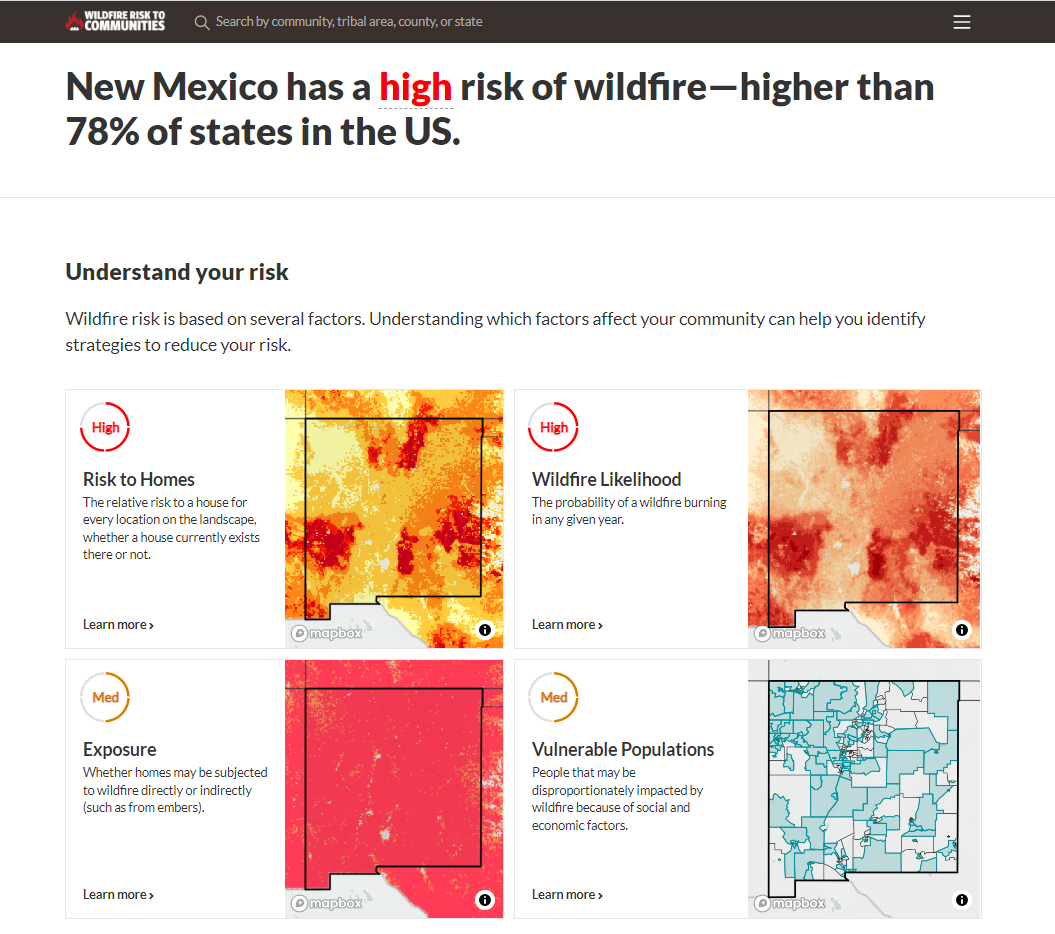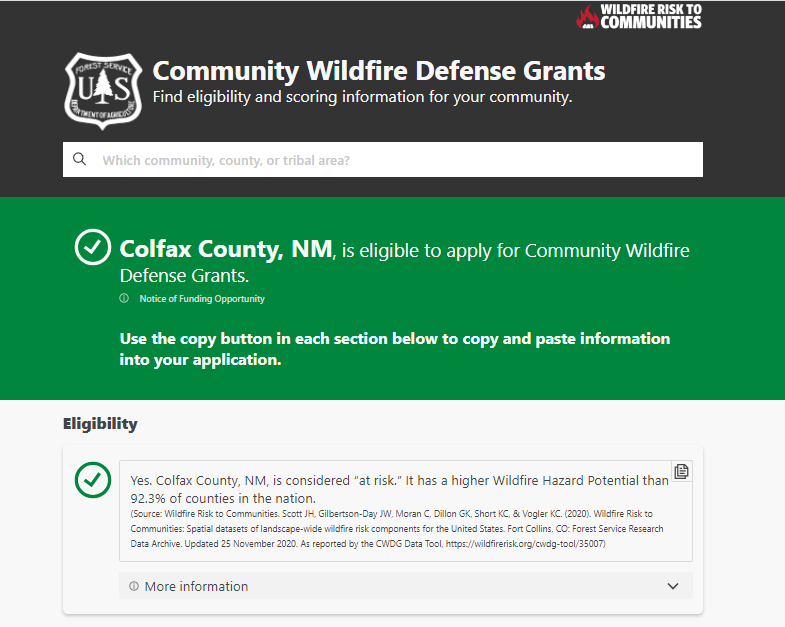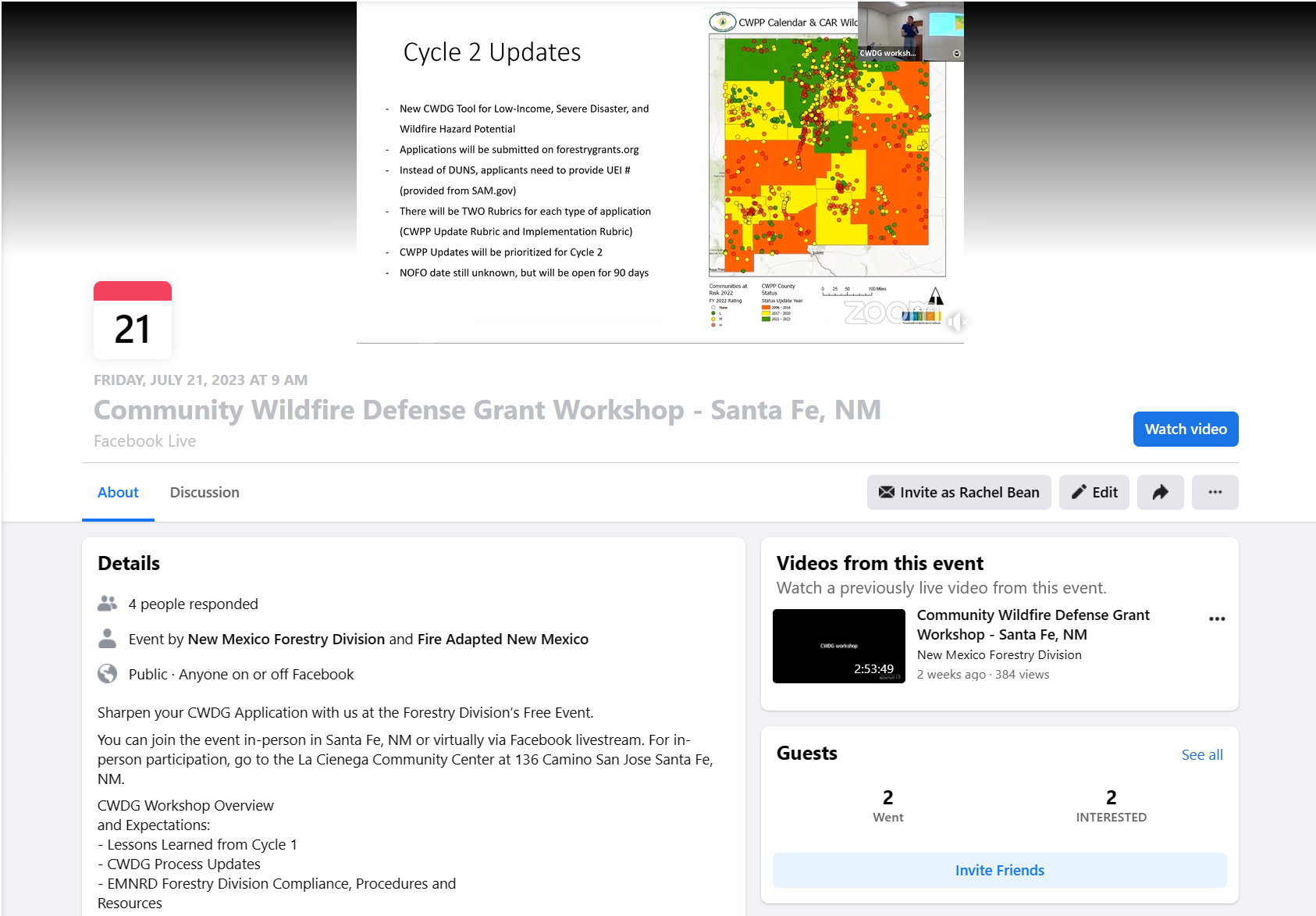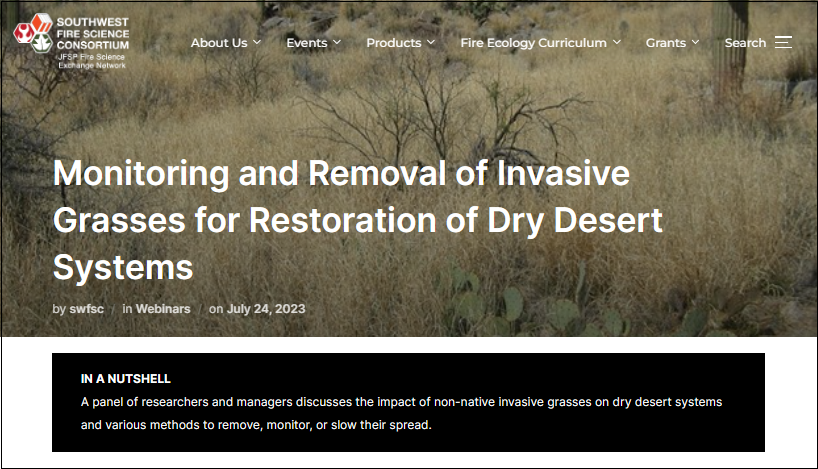Happy Wednesday, Fireshed folks.
The Southwest’s delicate ecological balance is increasingly disrupted by the devastating force of high severity wildfires, wreaking havoc on landscapes, homes, and lives. In recent years, the frequency, intensity, and impact of wildfires have grown, highlighting the urgent need to implement effective mitigation strategies. The Community Wildfire Defense Grant (CWDG) Program was introduced in 2022 as a tool to assist communities across the US grappling with a growing threat. This innovative initiative is about more than funding; it represents a united desire, from Washington D.C. to our own backdoors, to create and bolster resilience against the fires that threaten our homes and environment. In this week’s Wildfire Wednesday, we delve into the basics of the Community Wildfire Defense Grant Program, exploring its significance, objectives, and the transformative impact it aims to have on wildfire management.
Today’s Wildfire Wednesday features:
An introduction to CWDG
Round 1 awards and insights
Application tools & data
Round 2 announcement
Upcoming opportunities
-Alyssa
What is the Community Wildfire Defense Grant Program?
An overview
The Community Wildfire Defense Grant (CWDG) Program is a comprehensive approach to building community, ecological, and structural resilience and preparedness in the face of wildfires. Administered by the USDA Forest Service, this program stems from the recognition that safeguarding communities against wildfires requires a multifaceted strategy. It aims to empower local communities, organizations, and agencies to forge partnerships that foster cooperation and shared expertise in order to create and implement wildfire protection plans.
The primary objectives of CWDG are twofold: to enhance community preparedness and to mitigate wildfire risks. This is achieved through a range of focus areas that address different aspects of wildfire defense:
Community Engagement: The program encourages active participation from residents, local authorities, and fire departments. By fostering a culture of collective responsibility, communities are better equipped to identify vulnerabilities and devise strategies for prevention, early detection, and evacuation.
Fuels Reduction: One pivotal component of wildfire management is reducing the amount of flammable material that can serve as fuel for fires in both urban and rural areas. The grant program supports projects such as vegetation management, thinning, controlled burns, and creating defensible spaces around homes and critical infrastructure.
Education and Outreach: Knowledge and a shared understanding of needs and objectives are the cornerstone of an effective wildfire defense. CWDG prioritizes educating communities about fire-safe practices, evacuation procedures, and the science of wildfires. Public awareness campaigns and workshops play a pivotal role in creating informed and prepared communities.
The CWDG initiative heralds a transformative shift in wildfire management. It nurtures collaboration among diverse stakeholders, blending traditional wisdom with current technological and scientific advancements. By focusing on both immediate action and long-term resilience, the program fosters a sense of ownership, ensuring that communities are not just recipients of assistance, but active participants in their own safety.
Round 1: Autumn 2022
Awards and Insights
In a significant stride towards bolstering community wildfire resilience, the Community Wildfire Defense Grant Program's inaugural funding round has yielded promising outcomes. A total of 100 projects have been approved for funding, with an impressive allocation of $197 million dedicated to these initiatives. The program's wide reach is evident, as it spans across 22 states and extends support to 7 tribes, fostering a collaborative approach to wildfire mitigation. Notably, within this diverse landscape of projects, New Mexico stood out with five applicants successfully securing funding. These projects include:
Colfax Collaborative Wildland Urban Interface Project ($8.8 million)
Flying Horse Ranch Fuel Break Project ($1.8 million)
Exercise and Project Implementation of Community Wildfire Protection Plan ($235k)
Sandoval CWPP Update ($63k)
Community Wildfire Mitigation in the Greater Santa Fe Fireshed ($1.3 million)
Application tools & data
Assistance evaluating risk for Round 2 applicants
"Wildfire Risk to Communities" is a user-friendly website developed by the USDA Forest Service to aid communities in comprehending and decreasing their vulnerability to wildfires. This platform, established at the directive of Congress, offers interactive maps, charts, and resources to support informed decision-making. Utilizing the most up-to-date research insights, the website identifies and assesses wildfire vulnerability, equipping communities with the necessary tools to manage and mitigate these risks. The data used in the project is drawn from consistent sources like LANDFIRE for vegetation and fuels, the National Weather Service for weather information, and the U.S. Census Bureau for community data. Notably, wildfires and significant disturbances that happened after 2014 are not yet included in the data.
The website is primarily designed for community leaders such as elected officials, planners, and fire managers. It provides a broad perspective on risk across regions, states, and counties. While accessible for exploration online, the data can also be downloaded as GIS raster layers which enables more in-depth and personalized analysis. The website is intended to be used to compare risk among communities rather than within them and is not suitable for evaluating risk at the local, neighborhood, or individual home level.
An important feature is the CWDG tool, which allows users to specify a specific region or community and generate eligibility criteria data for their CWDG application. Applicants can cut and paste the risk information directly from the Wildfire Risk to Communities site into their application, increasing their likelihood to be selected for Round 2 funding by increasing their alignment with the application terms.
Workshop tips for applicants - recording available
In July 2023, FACNM and the New Mexico EMNRD Forestry Division held a series of workshops to assist potential Round 2 applicants with their proposals. Topics included:
Lessons Learned from Round 1
CWDG Process Updates
EMNRD Forestry Division Compliance, Procedures and Resources
Cycle 2 Application Review
A recording of one such workshop, held in Santa Fe, is available for viewing on the FACNM Facebook page.
Round 2: Summer 2023
Request for Proposals now open
The second round of CWDG Program funding is open for applications until October 31, 2023!
Eligible entities include local governments in wildfire-prone areas, Tribes, non-profit organizations, state forestry agencies, and Alaska Native Corporations. There are two proposal categories: 1) Community Wildfire Protection Plan (CWPP) Development/Revision, and 2) CWPP project implementation. Priority will be given to applications representing high-risk areas, low-income communities, and those impacted by recent disasters. Funding limits range from $250,000 to $10 million per project, with potential for up to $250 million in total funding. Funds matching is required, with waivers available for specific cases.
Upcoming Opportunities
Webinars
10 August at 12pm MDT: Monitoring and Removal of Invasive Grasses for Restoration of Dry Desert Systems.
In this webinar, a panel of scientists and practitioners will discuss a number of management techniques and research questions being utilized or tested in an effort to reduce the presence of introduced grasses and restore the historic fire regime in dry desert systems such as the Sonoran. This information can be used to improve current practices and help develop new approaches to slow the invasive grass-fire cycle in the southwestern US.
Conferences
4-8 December 2023: 10th International Fire Ecology and Management Congress
Hosted by the Association for Fire Ecology in Monterey, CA, this event will include workshops, field trips, and three full days of presentations, discussion groups, and networking opportunities around the theme Igniting Connections: Celebrating our fire family across generations, cultures, and disciplines.








